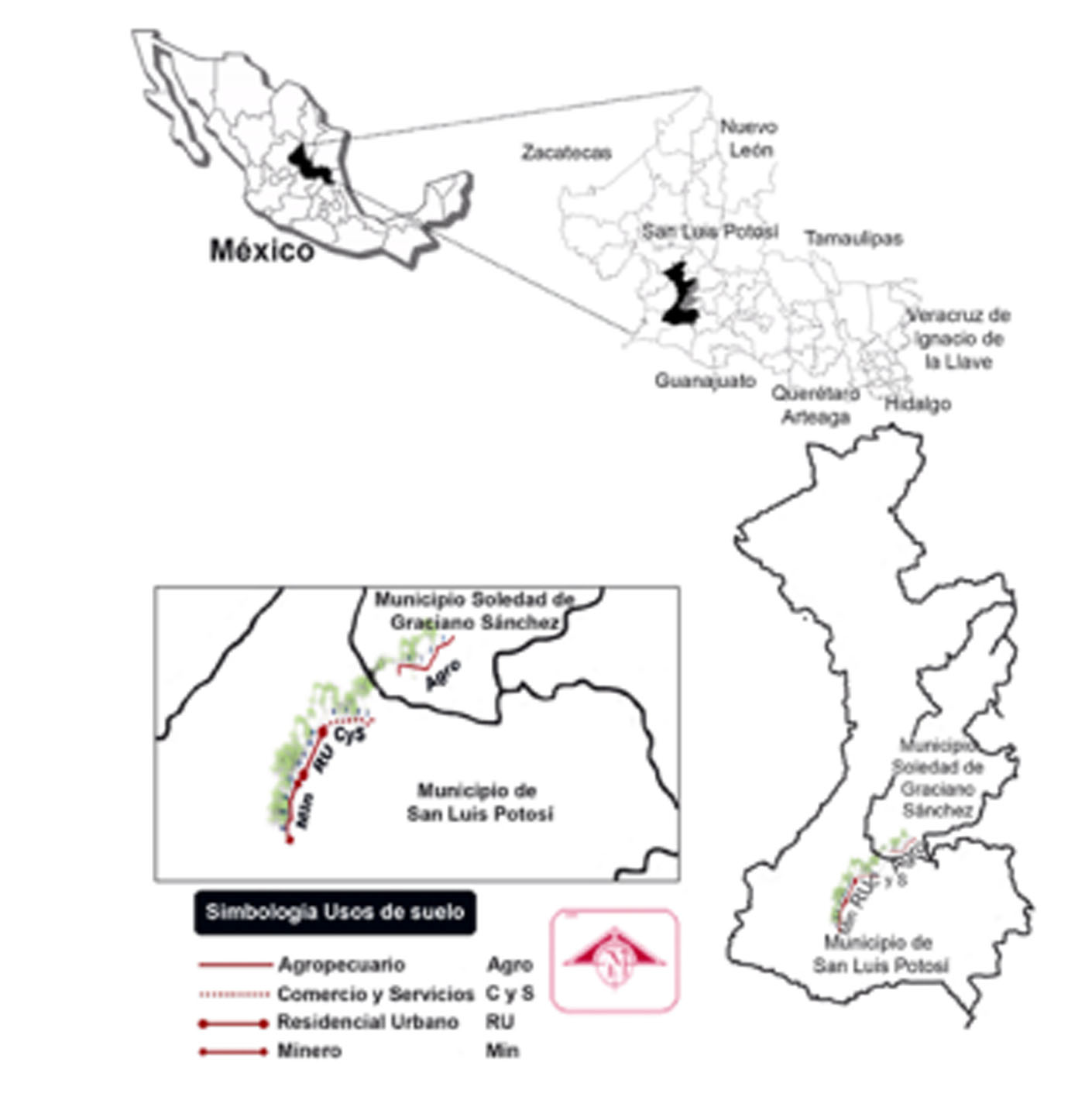Vegetative as bioindicators of heavy metals in a semiarid system
Keywords:
pollution, land use, leaves, season, environmental impactAbstract
The evaluation of pollution by heavy metals on ecosystems can determine the bioindicative capacity of plant species. The presence of heavy metals was determined in Prosopis laevigata, Acacia spp. and Schinus molle under the effect of different of land uses and seasons. The area is located near of the municipalities of Soledad de Graciano Sánchez and San Luis Potosi which has fragmented land use such as: agriculture, commercial and services, urban residential and mining. Samples were taken from leaves of the three species during summer, autumn, winter and spring to assess the concentrations of heavy metals through the technique of ICP-MS. Statistical analyzes showed levels of Aluminum (Al) > Zinc (Zn) > Lead (Pb) > Copper (Cu) > Titanium (Ti) > Vanadium (V) > Arsenic (As) > Chromium (Cr) > Cadmium (Cd) > Cobalt (Co). The elements Al, As, Cd, Cr, Pb and Ti had levels above the normal threshold in vegetation. Land use had a significant effect with Al, Ti, Cd, As and Pb having the trees being located in the land with mining and commercial and services use the greater concentrations. The species had a significant effect on Al and Pb with Acacia spp., having the largest storage capacity. The season of the year significantly impacted the accumulation of As, Cd, Co, Cu, Cr and Ti in the three species. The anthropogenic dynamics of different land uses generated waste particles and residues of heavy metals, impacting the availability and accumulation in the species evaluated. This study contribute to evaluate the environmental impact in the system with a fragmented land use and the continuation of this type of studies is recommended.

Downloads
Published
Issue
Section
License

This work is licensed under a Creative Commons Attribution-NonCommercial-ShareAlike 3.0 Unported License.
Aquellos autores/as que tengan publicaciones con esta revista, aceptan las Políticas Editoriales.


